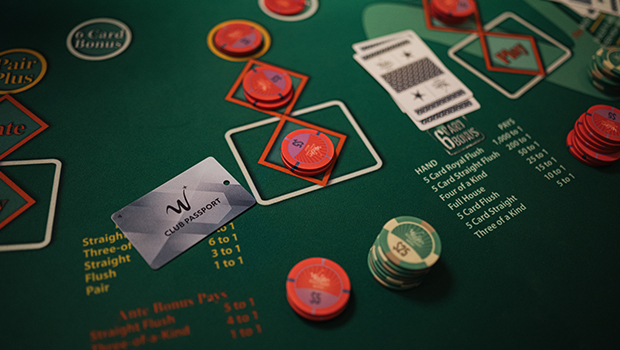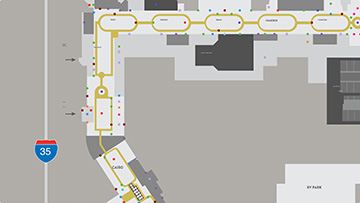Poker is one of the most popular card games worldwide, combining strategy, skill, and luck. Whether you’re brand new to the game or just need a refresher, this guide will help you learn how to play poker from the ground up. With easy-to-follow instructions, you’ll discover everything you need to know, including how to play poker step by step, so you can feel confident the next time you sit at a poker table. Let’s dive into how to play poker and why it’s a favorite for players around the world.
What is Poker?
Poker is a card game where players aim to form the best hand possible and win chips from other players by betting strategically. There are many variations, but the most common is Texas Hold’em, which is played at many major poker tournaments and casual games alike.
What to Know Before You Play Poker
Before jumping into the game, it’s crucial to understand some essential aspects of poker game rules and hand rankings. These basics will give you the foundation needed to make confident decisions at the table. Whether you’re trying to figure out how to bet or aiming to form the best hand, knowing the rules and rankings inside and out is key to improving your game.
Poker Hand Rankings
Knowing hand rankings is key to success in poker. Here’s the list from best to worst:
- Royal Flush: Ace, King, Queen, Jack, Ten of the same suit.
- Straight Flush: Five cards of the same suit in numerical order.
- Four of a Kind: Four cards of the same rank.
- Full House: Three cards of one rank and two of another.
- Flush: Any five cards of the same suit, not in numerical order.
- Straight: Any five cards in numerical order, not of the same suit.
- Three of a Kind: Three cards of the same rank.
- Two Pair: Two cards of one rank and two of another.
- Pair: Two cards of the same rank.
- High Card: The highest card in your hand.
Understanding these rankings will help you know what hands to aim for and when to fold if you have a weak hand.
How to Play Poker Step by Step
Learning how to play poker can seem overwhelming at first, but once you break it down, it becomes much easier to understand. Follow these poker steps to get a clear picture of how the game flows from start to finish:
1. Sitting Down & Getting Ready to Play
Once you’re seated at the poker table, the game begins with the dealer shuffling the deck. In most standard poker games, each player is required to place a small initial bet called a “blind” or an “ante,” depending on the game format. These forced bets ensure there’s always a pot to compete for.
2. Dealing and Playing the Cards
Now that everyone has posted their blinds, it’s time for the dealer to deal the cards. In Texas Hold’em, for example, each player receives two cards, dealt face-down. These are known as your “hole cards.” Players then pick up their cards and look at them. The action then moves to the first round of betting. Players take turns deciding whether to:
- Call: Match the current bet placed by another player.
- Raise: Increase the size of the current bet.
- Fold: Discard your cards and sit out the rest of the hand, forfeiting any bets you’ve made so far.
- Check: If no one has placed a bet, you can “check” and pass the action to the next player without betting.
This first round of betting is crucial, as it allows you to evaluate your hand and make decisions based on the strength of your hole cards.
3. The Flop
After the first round of betting, the dealer places three community cards face-up in the middle of the table. This is called “the flop.” These are shared cards that all players can use in combination with their hole cards to make the best five-card hand possible. After the flop, another round of betting begins, and players once again have the option to call, raise, fold, or check.
4. The Turn
Once the second round of betting ends, the dealer reveals a fourth community card, called “the turn.” At this stage, players will have a clearer idea of their potential hands and may adjust their betting strategies accordingly. Another round of betting follows.
5. The River
The final community card, known as “the river,” is dealt face-up. Players now have all five community cards and their two hole cards to make their best hand. The last round of betting begins, and players must decide whether to stay in the hand, raise the stakes, or fold.
6. The Showdown
After the final betting round, it’s time for the showdown. Players reveal their cards, and the player with the highest-ranking hand wins the pot. If two or more players have equally strong hands, the pot is split between them. Understanding poker game rules and hand rankings is essential to determine the winner.
As you keep playing you’ll start to see how basic poker game rules come together in a real game. This journey from sitting down to the final showdown is a critical part of learning how to play poker step by step.
How Does a Betting Strategy Work in Poker?
Now that you understand the basic mechanics of poker, let’s dive into betting strategies that can help you make more informed decisions at the table. Knowing when to call, check, raise, or fold can be the difference between winning big or losing your stack, even if your cards aren’t the strongest. Here’s when you might want to consider each option:
Call: You’ll want to call when you have a decent hand but aren’t confident enough to raise. It’s also a good option when you’re waiting to see another community card that could improve your hand, like in Texas Hold’em.
Check: If you don’t want to commit more chips but also don’t want to fold, checking lets you stay in the hand without adding to the pot. This can be useful if you’re hoping to see how other players act before making your next move.
Raise: Raise when you’re confident in your hand or want to apply pressure to other players. Raising can force weaker hands to fold or make them pay more to see the next card, giving you the chance to build the pot when you’re holding strong cards.
Fold: Sometimes, the best move is to fold early, especially if your hand is weak or you sense your opponents are strong. Folding saves your chips for a better hand down the road and is often the smartest play when the odds aren’t in your favor.
A successful betting strategy isn’t just about the cards you’re holding—it’s about understanding the psychology of the game. Use these options wisely to outmaneuver your opponents and maximize your chances of winning.
What Else Should You Know in Poker?
To master poker, you need to be familiar with more than just poker steps. Here are additional rules and strategies that will help you understand the game better:
Blinds and Antes in Poker
Before the action begins in Texas Hold’em, two players are required to post blinds to get the pot started. Here’s a breakdown of what you need to know:
- Small Blind: The player directly to the left of the dealer places the small blind. This is typically half the size of the big blind.
- Big Blind: The player two seats to the left of the dealer places the big blind. This bet is usually twice the amount of the small blind.
These blinds are mandatory bets designed to ensure there’s money in the pot from the start. Without them, players could fold endlessly without any consequences. The blinds rotate clockwise around the table with each new hand, meaning everyone will eventually be required to post them.
In some games, antes are also used, especially in tournament play. Antes are small, forced bets that every player at the table must contribute before each hand is dealt. Unlike blinds, which are posted by just two players, antes come from everyone. The purpose is similar—to make sure there’s always something to play for in the pot.
Limit vs. No-Limit Poker
Poker games can have different betting structures, and the two most common formats in Texas Hold’em are Limit and No-Limit poker.
- Limit Poker: In Limit games, betting amounts are pre-set, which means you can only bet or raise a certain amount during each round. For example, in a $5/$10 Limit game, you can only bet $5 in the first two rounds and $10 in the final two rounds. The structured betting makes Limit poker more predictable and less volatile.
- No-Limit Poker: In No-Limit games, you can bet any amount of your chips at any time, up to going “all in,” which means betting all of your chips on a single hand. This style of poker is fast-paced and can create larger pots, leading to more exciting gameplay. However, it also carries a greater risk, as one wrong move could wipe out all your chips in a single hand.
Try Your Hand at Poker at WinStar World Casino
Now that you know how to start poker, why not test your skills at WinStar World Casino? With a variety of poker tables and tournaments available, it’s the perfect place to put your new knowledge into action. Whether you’re a seasoned player or just starting, WinStar offers a poker experience for everyone.
Good luck, and enjoy the thrill of the game!






















